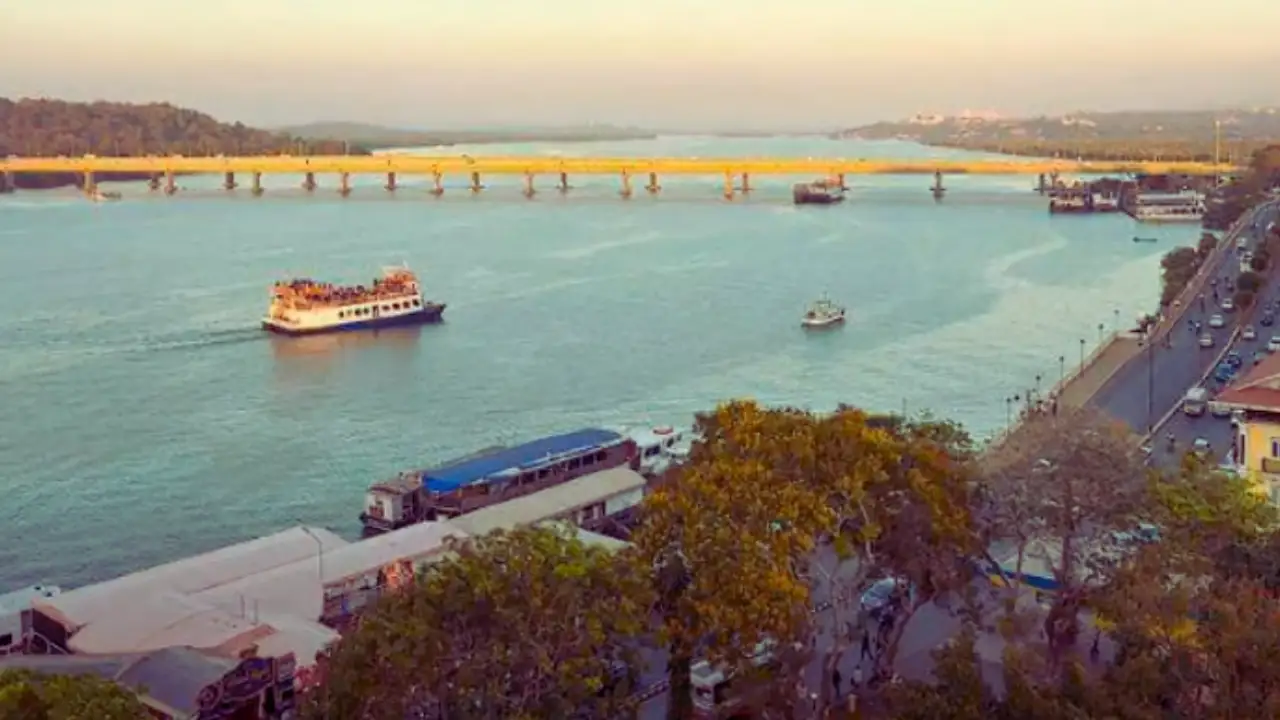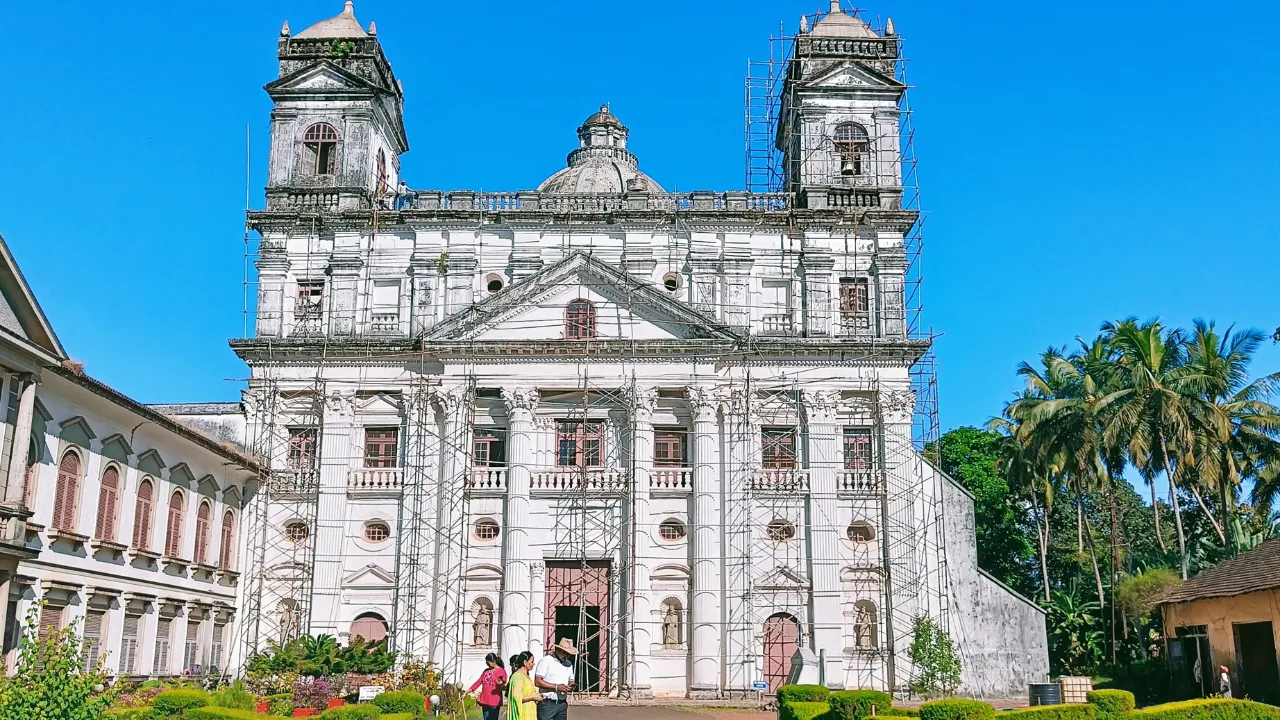
What is the Capital of Goa | Discovering the Charms of Goa
What is the Capital of Goa | Discovering the Charms of Goa
What is the capital of Goa: Panaji serves as the administrative capital of the autonomous state of Goa, which was historically governed by Portuguese Imperial rule.
The former capital was Velha Goa. Until its annexation by the Union of India, Goa remained a district of Portugal since 1511.
In terms of quality of life, Goa has been rated as the best state to live in by the government and is relatively cleaner compared to other parts of India.
Panaji is the capital city, while Vasco Da Gama is the largest city in the state. Personally, when I visited Goa, it felt like I was in a completely different country, but I also felt proud of the diverse nature of our subcontinent.
I apologize for stating the answer in the first sentence, but I wanted to provide additional information generously.
Hopefully, this rephrased information is satisfactory and the extra details are useful. It’s worth noting that language is not a significant barrier when visiting Goa.

What is the Capital of Goa | Embracing the Soul of Goa
Panaji holds the distinction of being the fourth capital in the rich history of the state. It functioned as a capital from 1759, but it wasn’t until 1843 that it officially became the capital of the state.
Before Panaji, the state capital was Old Goa (also known as Goa the Old) from the time of its arrival in 1510 until 1759.
However, due to a series of epidemics caused by sanitation issues, the Viceroy was compelled to relocate to Panaji. Subsequently, in 1843, Panaji was officially declared the capital, also known as Nova Goa.
Among the previous capitals of the state under former rulers, there were Chandor (then known as Chandrapur) and Gopakpattan (consisting of Agasaim and Goa Velha).

Metropolitan Goa
Urban Goa is the vibrant hub where excitement thrives. It is home to stunning beaches, magnificent churches, and a rich tapestry of art and culture.
People often ask what is the capital of Goa well, this is the place where you can discover it all, immersing yourself in the beauty and allure it offers.
What is the Capital of Goa – Panjim
Panjim, the capital of Goa, is situated on the southern left bank of the Mandovi River, creating a picturesque backdrop for the town.
It stands as one of India’s most scenic and charming state capitals, although some less aesthetically pleasing construction has been permitted in recent years.
With its tiled roofs, tree-lined avenues, and bridges, Panjim is a small yet captivating city where a sense of familiarity pervades among its residents.
While it is now referred to as Panaji, which can be challenging for English speakers, during colonial times (pre-1961), it was spelled as Pangim. Additionally, it was briefly known as Nova Goa (New Goa) under Portuguese rule.
However, the most commonly used term for the city remains the Konkani variation, Ponn’je.
Old Secretariat
From 1759 to 1918, this building functioned as the designated residence for the viceroys. Following that period, it was repurposed to accommodate government offices and served as the location for the State Assembly until recently.
This elegant two-story structure, adorned with a charming brown tiled roof, boasts a commanding vantage point overlooking the riverside.
Currently, there is an ongoing debate regarding the future utilization of this building, now that a new Secretariat has been constructed.

18 June Road
Tourists find streets such as 18th June Road in Panjim to be significant shopping destinations. The name of this road commemorates an anti-colonial protest led by socialist leader Ram Manohar Lohia in 1946.
For a diverse assortment of cashew nuts infused with various flavors and spices, one can visit Kajuwala located along 18th June Road.
This bustling street is also renowned for its wide selection of books and CDs featuring Goa’s immensely popular Konkani music.

Altinho
Experience a breathtaking panoramic vista from the summit of Altinho, a hilltop neighborhood derived from the Portuguese word for “tall.”
In the past, Altinho was inhabited by Goa’s elite, and it continues to be an upscale locality.
However, you will now find a blend of government quarters coexisting with prominent landmarks such as the radio station, the Chief Minister’s residence, and the Archbishop’s Palace.
Altinho in Panjim offers a unique blend of historical significance and contemporary presence.

Old Latin Quarters – Fontainhas
A visit to the historic Latin Quarter of Fontainhas, nestled behind Pato Bridge, should not be missed by any visitor.
Take the time to stroll leisurely through this heritage area and immerse yourself in its charming old-world Mediterranean ambiance.
Begin your exploration near the well-preserved 300-year-old Panjim inn, which showcases remarkable restoration efforts.
Adjacent to it, you’ll find the Velha Goa Galeria, a testament to local craftsmanship harmoniously integrated with the colonial legacy.
This gallery offers a captivating assortment of hand-painted tiles, including the traditional blue-colored azulejos, along with other ceramic artworks (4/191 Rua de Ourem, Fontainhas;.
Take a peek inside the Panjim Inn to catch a glimpse of a beautifully restored heritage hotel. Just across the road, you’ll find the Fundacao Oriente, a philanthropic foundation funded by Portugal, originally supported by gambling revenues from Macau.
Next to it is the Gallery Gitanjali, an art center (212, 31st January Road, Fontainhas). Be sure to explore other intriguing places in the vicinity, such as the outlet of fashion designer Wendell Roderick and Sosa’s along the Rua de Ourem waterfront.
Fontainhas in Panjim offers a delightful array of experiences waiting to be discovered.

Sao Tome
In close proximity to Fontainhas lies another historic quarter of Panjim called Sao Tome. This residential-office mix settlement exudes charm with its low-rise houses and narrow lanes.
In the past, it served as Goa’s bustling “Fleet Street,” housing newspapers and printing presses. Even today, the English-language daily newspaper, Herald, continues to operate from this area.
Adjacent to Sao Tome is the picturesque Rua de Ourem creek, which offers a captivating sight, particularly on bright mornings.
The creek reflects the vibrant hues of the colorful homes and offices, creating a perfect backdrop for stunning photographs.
The three-century-old Pato Bridge nearby adds to the allure. Within this area, you’ll also find the Panjim General Post Office, located in a captivating colonial building that exudes an old-world charm.
Sao Tome in Panjim is a captivating district that seamlessly blends history, architecture, and natural beauty.

Panjim Church
The parish church of Panjim, which is over four centuries old, boasts a remarkable architectural feat in the form of its magnificent and visually striking staircase constructed in 1870.
According to architectural experts, the church’s belfry houses a massive bell weighing approximately 2.25 tons, making it the second-largest in size among all the bells in Goa.
With its pristine white facade, the church stands as a dominant presence in the skyline, overlooking the Church Square.
Stepping inside, visitors are greeted by an atmosphere permeated with tranquility and serenity.
Church Square in Panjim is a captivating location where the rich heritage and peaceful ambiance of the church create an unforgettable experience.

Mahalaxmi Temple
Situated off Dada Vaidya Road, the Mahalaxmi Temple holds the distinction of being the first temple permitted to be constructed in Portuguese-controlled Goa after a span of three centuries.
Its construction dates back to 1818, and the temple’s deity originally hailed from the village of Taleigao. In the 16th century, the deity was relocated to Bicholim as a means to evade the Portuguese intolerance prevalent at the time.
The Mahalaxmi Temple, located off Dada Vaidya Road in Panjim, stands as a testament to Goa’s historical and cultural resilience.

The Basilica of Bom Jesus
The Basilica of Bom Jesus holds the distinction of being one of the oldest churches in India. Its construction commenced in the final years of the sixteenth century, and it was consecrated in 1605.
This remarkable monument has been designated as a UNESCO World Heritage Site and stands as a prime example of exquisite baroque architecture.
Inside the basilica, a beautifully adorned casket houses the mortal remains of St. Francis Xavier. The revered remains of the saint are considered sacred and are believed to possess remarkable healing powers.
As a result, the basilica attracts a significant number of Christian devotees from around the world who visit this holy site annually.
The Basilica of Bom Jesus is a place of deep spiritual significance and continues to inspire awe and reverence.

Dr. Salim Ali Bird Sanctuary
Nestled within the serene low-lying mangrove forests on the western periphery of Chorao Island, the Dr. Salim Ali Bird Sanctuary spans an expansive area of approximately 440 acres.
Benefitting from its strategic location along the banks of the Mandovi River, this sanctuary serves as a natural habitat for both local and migratory avifauna.
Accessible via a scenic ferry ride, the sanctuary features well-laid pathways that meander through the mangrove swamp forests, allowing visitors to explore its captivating beauty.
However, access to the sanctuary is restricted during high tides for safety reasons. To enhance bird-watching experiences, a watchtower is situated within the sanctuary, offering visitors a vantage point to observe the diverse bird species.
Additionally, the sanctuary is teeming with other fascinating creatures such as fiddler crabs and mudskippers, showcasing the richness of the mangrove ecosystem.
Among the bird species that can be spotted here are the red knot, little bittern, pintails, and coots. The Dr. Salim Ali Bird Sanctuary promises an enchanting encounter with nature’s avian wonders.

Goa State Museum
The Goa State Museum showcases the progressive journey of Goan history and culture.
Through an extensive collection of artifacts spanning various epochs, the museum vividly portrays the significance of local traditions at different junctures in time.
Initially established on a small scale in St. Inez in 1977, the museum later relocated to the EDC Complex in Patto in June 1996.
Featuring around 14 themed galleries, the Goa State Museum serves as a captivating gateway bridging the gap between the past and the present.

Suggested Posts
Morjim Beach Shacks: Scenic Views and Delicious Delights
Spas in Goa | Get Ready for Spa Heaven | Spa Near Me Goa
Morjim Beach Shacks: Scenic Views and Delicious Delights
Bamanbudo Waterfall – Canacona – Explore Goa
What is Baga Beach in North Goa Famous For?

